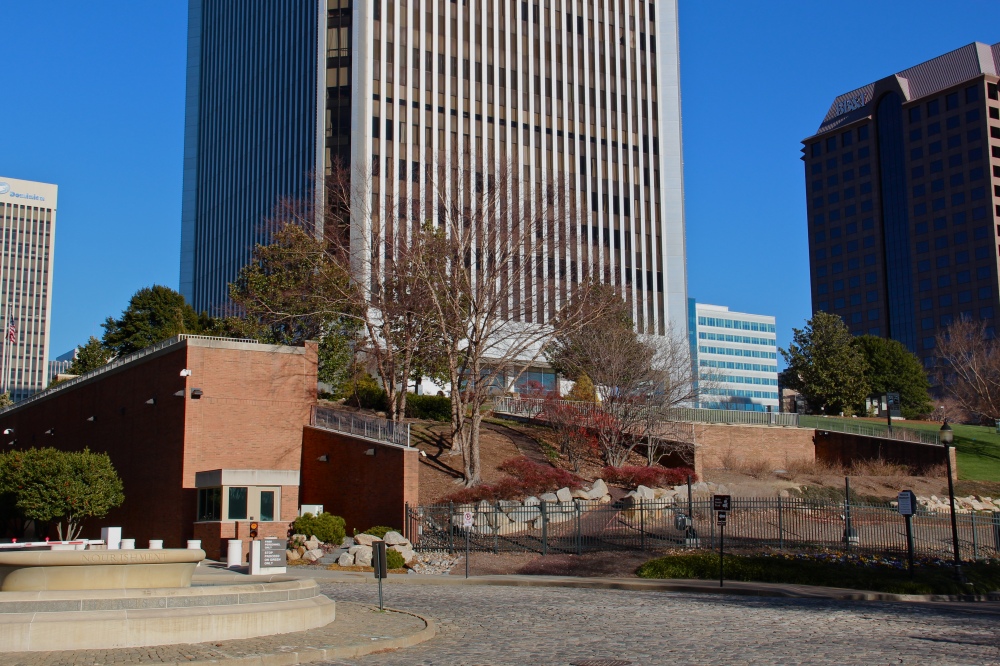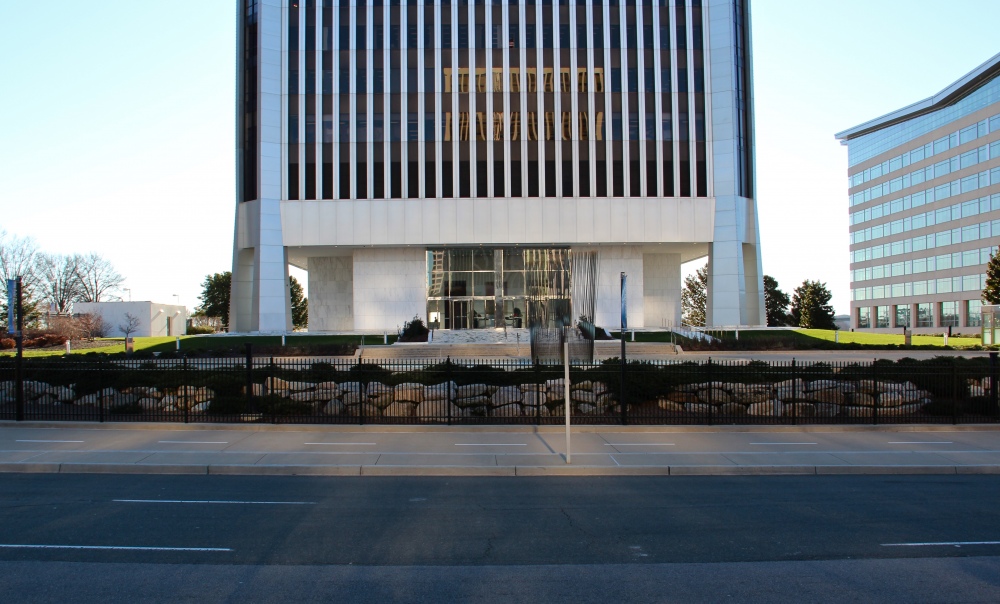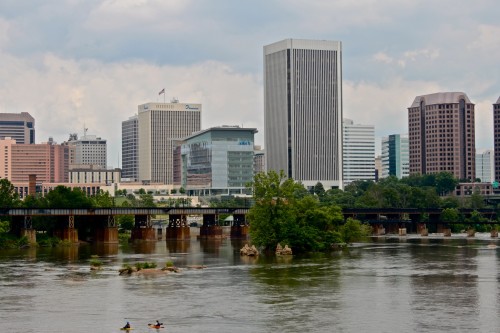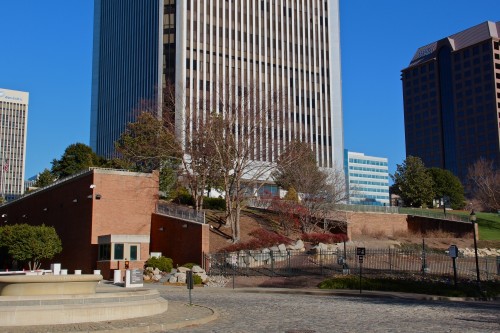Having a landmark architect design in a city has always been an exciting event and the Federal Reserve Bank is no exception. Minoru Yamasaki implemented his often rigid principles without restraint; glass, aluminum and verticality harmonize in a building both sleek and monumental. Interestingly, he refrained from incorporating any arch or cornice elements into the tower as he had done in Seattle’s IBM tower or Madrid’s Torre Picasso. Perhaps he sensed the need for a fresh and modern approach in a city sometimes as plagued by its history as it is enriched by it. The design is decidedly nonreferential.
This is as true in its approach to the site as anywhere. Rather than anchor itself to a city block on a solid base as bank towers conventionally do, the building is set on a pedestal like assemblage of legs on a lawn. Its height may fool you, but in plan the work is barely urban. Surface lots front 9th street and inaccessible grass address the rest of the block. A large fountain and parking round sit before the main Byrd Street entrance. The approach to the building is more similar to a Los Angeles mansion than a skyscraper. The building is lifted off of the ground in a pseudo-Corbusian reference to the same disastrous mid-century planning that led to the Federal Reserve’s exile across the highway.
Clearly, the building is beyond the typical bevy of complaints launched by the urban-conscious community in Richmond. One can’t simply request the elimination of surface parking and the addition of ground floor retail. Mixed use development south of the expressway along the river will be very important for activating this space and for bettering the health of a sickly downtown. However, even this will not be enough to correct the mistakes of the Federal Reserve. As beautiful as the building is, only an intelligent and thorough redesign of the entire site and its relationship to the street would result in establishing urbanity south of Kanawha plaza.
D.OK.
Our inventory article on the Federal Reserve Bank.







Write a Comment